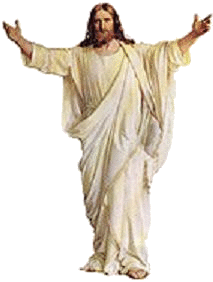Author: heavenly-inspired
•11:24 PM


| Novena Masses | Jan. 8-16, 17-18, 19 & 23, 2009 |
| Theme: “ Growing together in grace with Señor Sto. Niño” |
|
|
|
| Day 1 - January 8, Thursday | Opening Salvo - Walk with Jesus |
| 4:00 a.m. | Assembly - Fuente Osmeña |
| 4:30 a.m. | Penitential foot procession, Jones Ave. Colon - Basilica |
| 5:30 a.m. | Holy Mass ( Rev. Fr. Rodolfo A. Bugna, O.S.A and the Augustinian Community) - Installation fof Hermano & Hermana Mayores 2009 |
|
|
| Day 2 - January 9, Friday |
|
| Mass schedule: |
|
| 5:30 a.m. — 7:00 a.m. — 8:30 a.m.– 10:00 a.m. — 11:30 a.m. — 1:00 p.m. — 2:30 p.m. — 4:00 p.m. — 5:00 p.m. — 7:00 p.m. — 8:30 p.m. |
|
|
|
| Day 3 - January 10, Saturday |
|
| Mass schedule: |
|
| 5:30 a.m. — 7:00 a.m. — 8:30 a.m. — 10:00 a.m. — 11:30 a.m. — 1:00 p.m. — 2:30 p.m. — 4:00 p.m. — 7:00 p.m. — 8:30 p.m. |
|
|
|
| Day 4 - January 11, Sunday |
|
| Mass schedule: |
|
| 5 -5:30 a.m. — 7:00 a.m. — 8:30 a.m. — 10:00 a.m. — 11:30 a.m.– 1:00 p.m. — 2:30 p.m. — 4:00 p.m. — 5:30 p.m. |
|
|
|
| Day 5 - January 12, Monday |
|
| Mass schedule: |
|
| 5 -5:30 a.m. — 7:00 a.m. — 8:30 a.m. — 11:30 a.m. — 1:00 p.m. — 2:30 p.m. — 4:00 p.m. — 5:30 p.m. |
|
|
|
| Day 6 - January 13, Tuesday |
|
| Mass schedule: |
|
| 5:30 a.m. — 7:00 a.m. — 8:30 a.m. — 10:00 a.m. — 11:30 a.m. — 1:00 p.m. — 2:30 p.m. — 4:00 p.m. — 5:30 p.m. — 7:00 p.m. — 8:30 p.m. |
|
|
|
| Day 7 - January 14, Wednesday |
|
| Mass schedule: |
|
| 5:30 a.m. — 7:00 a.m. — 8:30 a.m. — 10:00 a.m. — 11:30 a.m. — 1:00 p.m. — 2:30 p.m. — 4:00 p.m. — 5:30 p.m. — 7:00 p.m. — 8:30 p.m. |
|
|
|
| Day 8 - January 15, Thursday |
|
| Mass schedule: |
|
| 5:30 a.m. — 7:00 a.m. — 8:30 a.m. — 10:00 a.m. — 11:30 a.m. — 1:00 p.m. — 2:30 p.m. — 4:00 p.m. — 5:30 p.m. — 7:00 p.m. |
|
|
|
| Day 9 - January 16, Friday |
|
| 4:00 a.m. mass |
|
| Assembly area: Fuente Osmeña |
|
| 5:30 a.m. | Dawn Rosarians mass |
| 7:00 a.m. | Misa de Tranaslacion |
| 8:30 a.m. | with Fr. Andrew P. Batayola, O.S.A Prior, San Agustin Center of Studies VA SRA Quezon City |
| 10:00 a.m. — 11:30 a.m. |
|
| 12:30 p.m.- 2:30 p.m. | District teachers traditional halad |
| Other masses: 2:30 p.m. — 4:00 p.m. — 5:30 p.m. — 7:00 p.m. — 8:30 p.m. |
|
|
|
| January 17, Saturday | Vesperas |
| 5:30 a.m. | with Most Rev. Jesus Tuquib, D.D Visayan Mass |
| 7:00 a.m. | with Most Rev. Patrick A. Buzon, SDB. D.D English Mass Mass for the OFW families |
| Fluvial procession |
| 9:00 a.m. | Re-enactment of the first mass and baptism |
| 1:30 p.m. | Solemn foot procession of the Miraculous Image |
| 6:00 p.m. | Pontifical mass |
| 8:00 p.m. | Religious “Sinulog to Sr. Sto. Niño Pit Señor One hour Dancing to the beat of the drums with candles |
|
|
| January 18, Sunday | Fiesta Señor Day |
| 4:00 a.m. | Mañanita mass |
| 6:00 a.m. | Solemn Pontifical |
| Other masses: 8:30 a.m. — 10:00 a.m. — 11:30 a.m. — 1:00 p.m. — 2:30 p.m. — 4:00 p.m. — 5:30 p.m. — 7:00 p.m. |
|
|
|
| Fiesta Señor 2009 January 19, Monday | Thanksgiving Day |
| 5:00 a.m. | Cebuano - High Mass |
| 6:00 a.m. | Cebuano - High Mass |
| 7:00 a.m. | English - High Mass |
| 8:00 a.m. | Mass for the OFW’s |
| 10:00 a.m. | Thanksgiving mass |
| 2:00 p.m. | Thanksgiving mass |
| 4:00 p.m. | Rwquiem mass for the deceased members of the devotees and Cofradia del Sto. Niño |
| 4:00 p.m. | Motorcade of the Blessed Virgin Mary from Basilica del Sto. Niño back to Guadalupe Shrine |
| 5:30 p.m. | Healing mass for the sick and the aged |
|
|
| Fiesta Señor 2009, January 23, Friday |
|
| 4:00 a.m. | Hubo mass |
| Other masses: 6:00 a.m. — 7:00 a.m. — 8:00 a.m. — 9:00 a.m. — 10:00 a.m. — 11:00 a.m. — 12:00 p.m. — 1:00 p.m. — 2:00 p.m. — 3:00 p.m. — 4:00 p.m. — 5:00 p.m. — 6:00 p.m. — 7:00 p.m. |
|
Source: http://www.sunstar.com.ph/blogs/sinulog/2009/01/08/novena-mass-schedule/
Author: heavenly-inspired
•10:49 PM
On April 7, 1521, the Portuguese navigator Ferdinand Magellan arrived and planted the cross on the shores of Cebu, claiming the territory in the name of the King of Spain. He presented the image of the child Jesus, the Santo Niño, as baptismal gift to Hara Amihan, wife of Rajah Humabon. Hara Amihan was later named, Queen Juana in honor of Juana, mother of Carlos I. Along with the rulers of the island, some 800 natives were also baptized to the Christian faith. At the moment of receiving the image, it was said that Queen Juana danced with joy bearing the image of the child Jesus. With the other natives following her example, this moment was regarded as the first Sinulog.
This event is frequently used as basis for most Sinulog dances, which dramatize the coming of the Spaniards and the presentation of the Santo Niño to the Queen. A popular theme among Sinulog dances is Queen Juana holding the Santo Niño in her arms and using it to bless her people who are often afflicted by sickness caused by demons and other evil spirits.
Author: heavenly-inspired
•10:37 PM
The word Sinulog comes from the Cebuano adverb sulog which is "like water current movement," which describes the forward-backward movement of the Sinulog dance. The dance consists of two steps forward and one step backward, done to the sound of drums. The dance is categorized into Sinulog-base, Free-Interpretation. Candle vendors at the Basilica continue to perform the traditional version of the dance when lighting a candle for the customer, usually accompanied by songs in the native language.
The Sinulog dance steps were believed to originate from Rajah Humabon's adviser, Baladhay. It was during Humabon's grief when Baladhay was driven sick. He then ordered his native tribe to bring Baladhay into a chapel where the Santo Niño was enthroned. Moments later, surprisingly, Baldhay was heard shouting, and was found dancing with outmost alertness. Baladhay was questioned as to whether why was he awake, and was shouting. Baladhay explained that he found a small child, pointing to the image of the Santo Niño, on top of him, and trying to wake him up. He, at great astonishment, scared the child away by shouting but couldn't explain why he was dancing the movements of the river. Up to this day, the two-steps forward, and the one-step backward movement dance is still used by the Santo Niño devotees believing that it was the Santo Niño's choice to have Baladhay dance what the holy child wants them to dance.
Author: heavenly-inspired
•10:12 PM

The country’s biggest, and grandest festival. Sinulog festival is the country’s biggest pageantry of sights, sounds and colors as it honors and pays homage to the patron saint of Cebu , the child Jesus — Sr. Sto. Niño. One of the most widely known festivals in the Philippines, and one of the most colorful too. On the 3rd Sunday of January in the city of Cebu, Sinulog is held in honor of the Santo NiNo, or the infant Jesus. The patron saint of the whole Cebu. It is a celebration of dance rituals to remember the recognition of Christianity from their paganism.
The participants move to the sound of the beat of drums and gongs, clothed in bright-colored costumes, in preparation for the ceremony which the country boasts to be one of the most colorful festivals being celebrated.
Sinulog lasts for 9 days, and on the 9th day, it ends with the Sinulog Grand Parade. From the wharf of Mandaue City to the wharf of Cebu City, the Santo NiNo being carried on a pump boat, in a vast decoration of various flowers and candles, the Fluvial Procession, a water parade at dawn, is observed the day before the parade. A re-enactment of Catholic Baptizing of Cebu is one of the highlights, as the parade ends at the Basilica. Due to the huge population of Cebu, the formal procession takes place by people who gather to join from all over the city in this religious event, lasts for hours.
And on the feast day, given by the Cardinal with the assistance of few numbers of bishops of Cebu, a Pontifical Mass is held at the Basilica. It is a habit that the majority of the Cebu's population would flock to the Basilica, attending the mass, and a parade takes place right after.





















